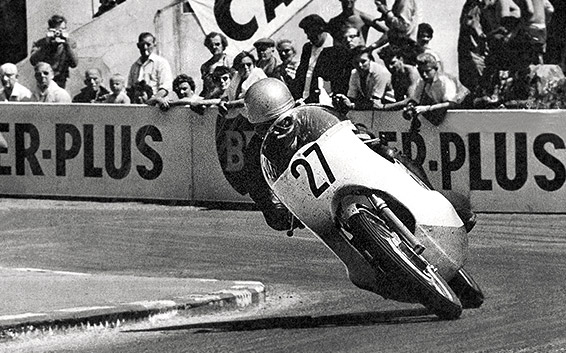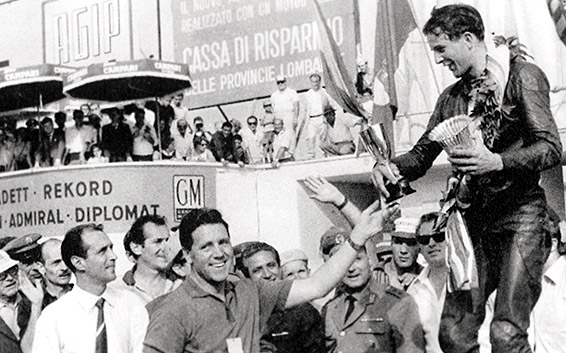The first All-Japan Road Race Championship was held over two days on November 3–4, 1962 on the Suzuka Circuit, which had just been completed the previous year in Mie Prefecture. The race was Japan’s first real road race using a track exclusively for that purpose.
The motorcycle Yamaha used for the race was the 250 cc TD1, which was a commercially marketed racer based on the YDS1 with even higher performance. Yamaha had begun exporting the TD1 at the beginning of 1962, and the bike had already strung together a series of victories in races around Europe. It was the forerunner of today’s TZ250. The decision was made to take on the opening race of the Suzuka Circuit with a TD1.

Yamaha put its full efforts into training riders. Along with placing ads in national newspapers, the company recruited top amateur riders recommended by dealers. The applicants were screened and narrowed to 60 candidates who then rode in time trials on the Tenryu Test Course. This further narrowed the pool to 20 riders.
At the same time, Yamaha acquired land in Suzuka and constructed a tune-up pit. The support team stayed there and devoted themselves to improving the engine and raising performance right up until the time of the race. Race vehicles shuttled numerous times between the headquarters and Suzuka, transporting modified parts. On the day before the race, Yamaha even arranged for a helicopter to transport spare engines to the race site if needed.
The finals were run in the rain. Yamaha had set its focus on the 250 cc class and 350 cc class in the novice category. There were 25 motorcycles entered in the 250 cc class, 15 from Yamaha and 10 from Honda. Despite the fact the first course was slick from the rain, the TD1 took first and second places thanks to its outstanding maneuverability. In the 350 cc class as well, a TD1 with a bored out engine took the checkered flag.

Having won Japan’s top race, Yamaha set it sights higher and began actively participating in the World Grand Prix. Yamaha’s factory racers originated with the 125 cc YX18, on which development began in July 1959. That bike’s technology was passed on, in the 250 cc class, to the RD56 via the RD48 and, in the 125 cc class, to the RA41 and RA61. After developing these single-cylinder bikes, the technology was applied to 2-cylinder machines, which led to the development of the RA75.


The RD56 was considered by many to be the strongest ever air-cooled 2-stroke racer. It raced in the Isle of Man TT Race in June 1963 and a British technical magazine recorded its top speed at 152.2 km/h. This speed put the RD56 among the top bikes, including 500 cc bikes, and attracted the attention of motorcycle experts in the US and Europe to Yamaha’s 2-stroke engine technology.
In the Netherlands GP, held subsequently in June, Yamaha placed second in both the 125 cc and 250 cc classes, and in the Belgium GP in July, the company claimed victory. On Belgium’s Spa-Francorchamps track, famous for its high speed, Yamaha established a new record for lap time, which earned the company lavish praise.
Yamaha formed a factory motorcycle development team and worked to develop an invincible bike by further improving the RD56 racer. As a result of these efforts, Yamaha won the manufacturers title in the 250 cc class in the World Grand Prix for two consecutive years in 1964 and 1965.

Circumstances, however, surrounding the World Grand Prix changed. Competition to develop GP racers, on which Japanese companies had staked their prestige, heated up and overwhelmed European manufacturers. Concerned over the situation, the Fédération Internationale de Motocyclisme (FIM) revised the GP regulations, which were placed on motorcycles participating in GP races. The regulations required 4 cylinders for 500 cc bikes, 2 cylinders for 250 cc bikes, and six-speed transmissions. As a result, Honda and Suzuki announced in 1968 that they would withdraw from the World Grand Prix. Yamaha made the decision to do the same the following year in March 1969.
Although road racing activities as a factory team were put on hold until 1972, during that time, Yamaha continued to offer machines capable of participation in the World Grand Prix to the market as production racers. Private riders and teams from numerous countries continued to compete on Yamaha motorcycles.
.










